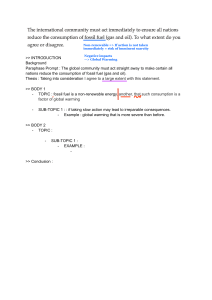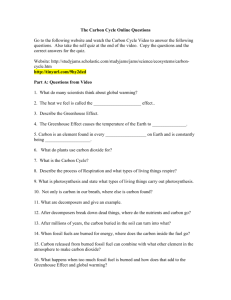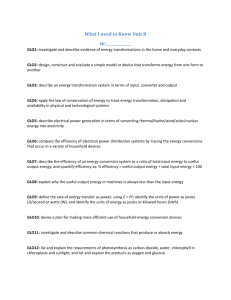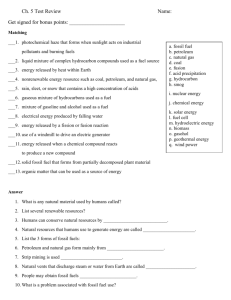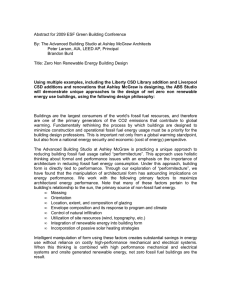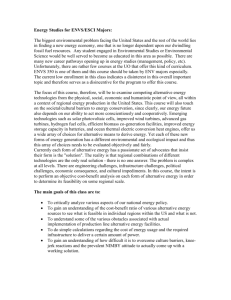MMEES - Homework 1
advertisement
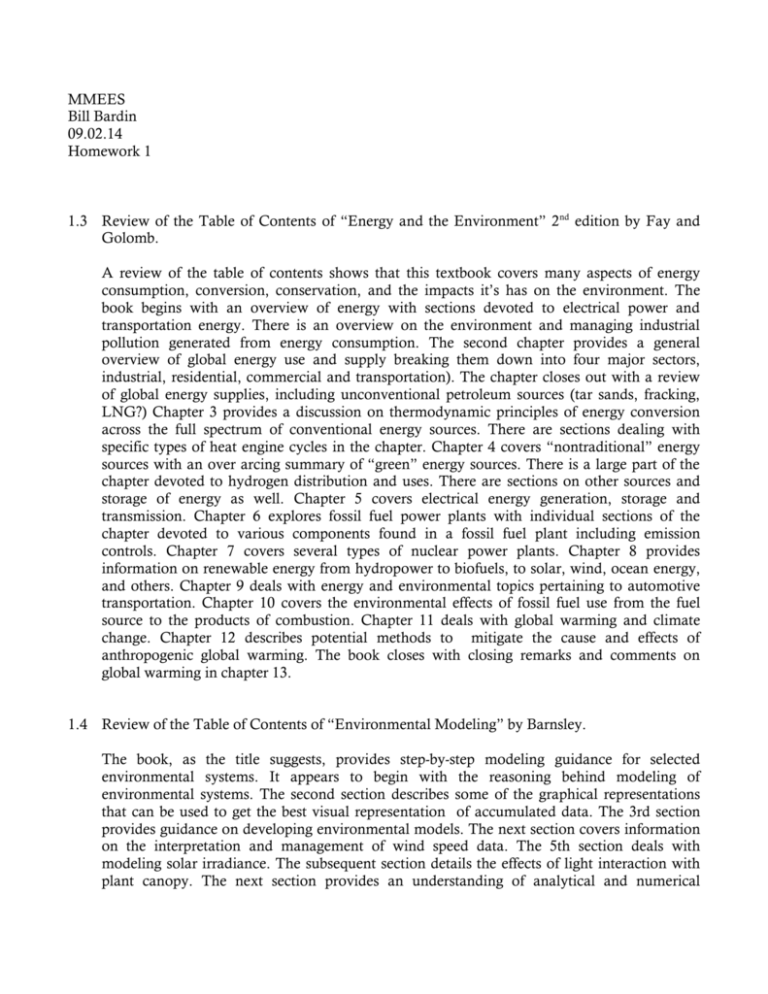
MMEES Bill Bardin 09.02.14 Homework 1 1.3 Review of the Table of Contents of “Energy and the Environment” 2nd edition by Fay and Golomb. A review of the table of contents shows that this textbook covers many aspects of energy consumption, conversion, conservation, and the impacts it’s has on the environment. The book begins with an overview of energy with sections devoted to electrical power and transportation energy. There is an overview on the environment and managing industrial pollution generated from energy consumption. The second chapter provides a general overview of global energy use and supply breaking them down into four major sectors, industrial, residential, commercial and transportation). The chapter closes out with a review of global energy supplies, including unconventional petroleum sources (tar sands, fracking, LNG?) Chapter 3 provides a discussion on thermodynamic principles of energy conversion across the full spectrum of conventional energy sources. There are sections dealing with specific types of heat engine cycles in the chapter. Chapter 4 covers “nontraditional” energy sources with an over arcing summary of “green” energy sources. There is a large part of the chapter devoted to hydrogen distribution and uses. There are sections on other sources and storage of energy as well. Chapter 5 covers electrical energy generation, storage and transmission. Chapter 6 explores fossil fuel power plants with individual sections of the chapter devoted to various components found in a fossil fuel plant including emission controls. Chapter 7 covers several types of nuclear power plants. Chapter 8 provides information on renewable energy from hydropower to biofuels, to solar, wind, ocean energy, and others. Chapter 9 deals with energy and environmental topics pertaining to automotive transportation. Chapter 10 covers the environmental effects of fossil fuel use from the fuel source to the products of combustion. Chapter 11 deals with global warming and climate change. Chapter 12 describes potential methods to mitigate the cause and effects of anthropogenic global warming. The book closes with closing remarks and comments on global warming in chapter 13. 1.4 Review of the Table of Contents of “Environmental Modeling” by Barnsley. The book, as the title suggests, provides step-by-step modeling guidance for selected environmental systems. It appears to begin with the reasoning behind modeling of environmental systems. The second section describes some of the graphical representations that can be used to get the best visual representation of accumulated data. The 3rd section provides guidance on developing environmental models. The next section covers information on the interpretation and management of wind speed data. The 5th section deals with modeling solar irradiance. The subsequent section details the effects of light interaction with plant canopy. The next section provides an understanding of analytical and numerical solutions to the problems from the preceding sections. The 8th section provides assistance on the construction of population dynamics models with the inclusion of population growth dynamics. The next section provides guidance in formulating mathematical models and the implementation of computational models. The final section covers the installation of the software that is provided with the book.

